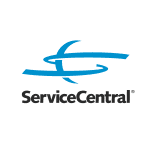Keeping the customers happy and the overhead low is Warranty and Insurance 101. Unfortunately, achieving quarterly goals while maintaining long-term relations is not the easiest balance to achieve. Returns management software systems are what stand between the customer’s claim and the internal scrambling for optimal efficiency.
While these systems should be there to guide the claims process, they can also be a regular source of headache if not implemented correctly. What’s more, many return merchant authorizers and service providers don’t even have a unified standard for warranty and insurance processes – at least, not when it comes to their software.
This post will cover some of the tips that can help you with those overhead issues. Read on; you may find yourself rethinking your claims process along the way.
#1 Identify What Isn’t Working & Look for Practical Solutions
The first step is a lengthy one (and perhaps, for some of you, obvious). Identifying pitfalls in any process—let alone those of warranty and insurance claims—can sometimes take several months. But before you can jump into a solution, you’d better be sure you and your team have a good grasp on what’s going wrong. Common issues affecting expenses may include:
Once you’ve identified what isn’t working, then it’s time to reach for practical solutions. These days, with so many SaaS companies and digital products available to help with internal processes, you’re in no short supply of options.
#2 Create a Standard of Workflow for Authorization
If you’re the primary owner behind the warranty claims operation, you create the standard of practice from the ground floor on up. If you take anything from this post, take this: OEMs, insurance companies, and their partners who implement a consistent process have positive effects on quality and efficiency.
How to Get Started
A fully integrated standard starts with intuitive, easy-to-use interfaces and management systems. So, look for software that benefits both you and your partners while also allowing for personalization as per your best practices. Once you have a system that’s both simple and allows for your process input, you’re one step closer to creating a workflow standard.
#3 Limit Manual Data & Claims Processing
Authorizers and service providers know that a quick way to let profits fall through the cracks is by allowing for human error via manual data submission. We mentioned the importance of having a unified standard – the next step is automation under the umbrella of that standard.
Get a smart system that prevents human error and eliminates unnecessary expenses. Cost factor aside, when you put automations and better programming in place, you open up more time for workers (particularly on the service provider end) to focus on customer service and claims accuracy.
#4 Give Workers a System That Supports Them
Speaking of worker efficiency, let’s continue to dwell for a moment longer on process since so much of this post hinges on it. Did you know that one in four employees admit a desire to quit their job simply over bad business processes?
Service providers can have all the work parties you want, but if they’re struggling to navigate their user interface and deliver timely, helpful service for customers, they likely won’t stick around. We’re also looking at you, authorizer. Even if you never interact with the customer, your workers should have efficient software that supports their role – not one that gets in the way.
It May Be Time for New RMA Software
At ServiceCentral, we specialize in software that serves at every step of the process. That includes the customer experience, service provider operations, and authorizer end goals. We know how complex reverse logistics processes can be. Of course, there’s no one-size-fits-all solution.
That’s why our software allows for ownership input and personalization. We’ll work with you to ensure your RMA and provider systems fire on all cylinders. We also offer digital solutions for retail repair industry pitfalls.
Learn more by connecting with us or filling out an inquiry form.





